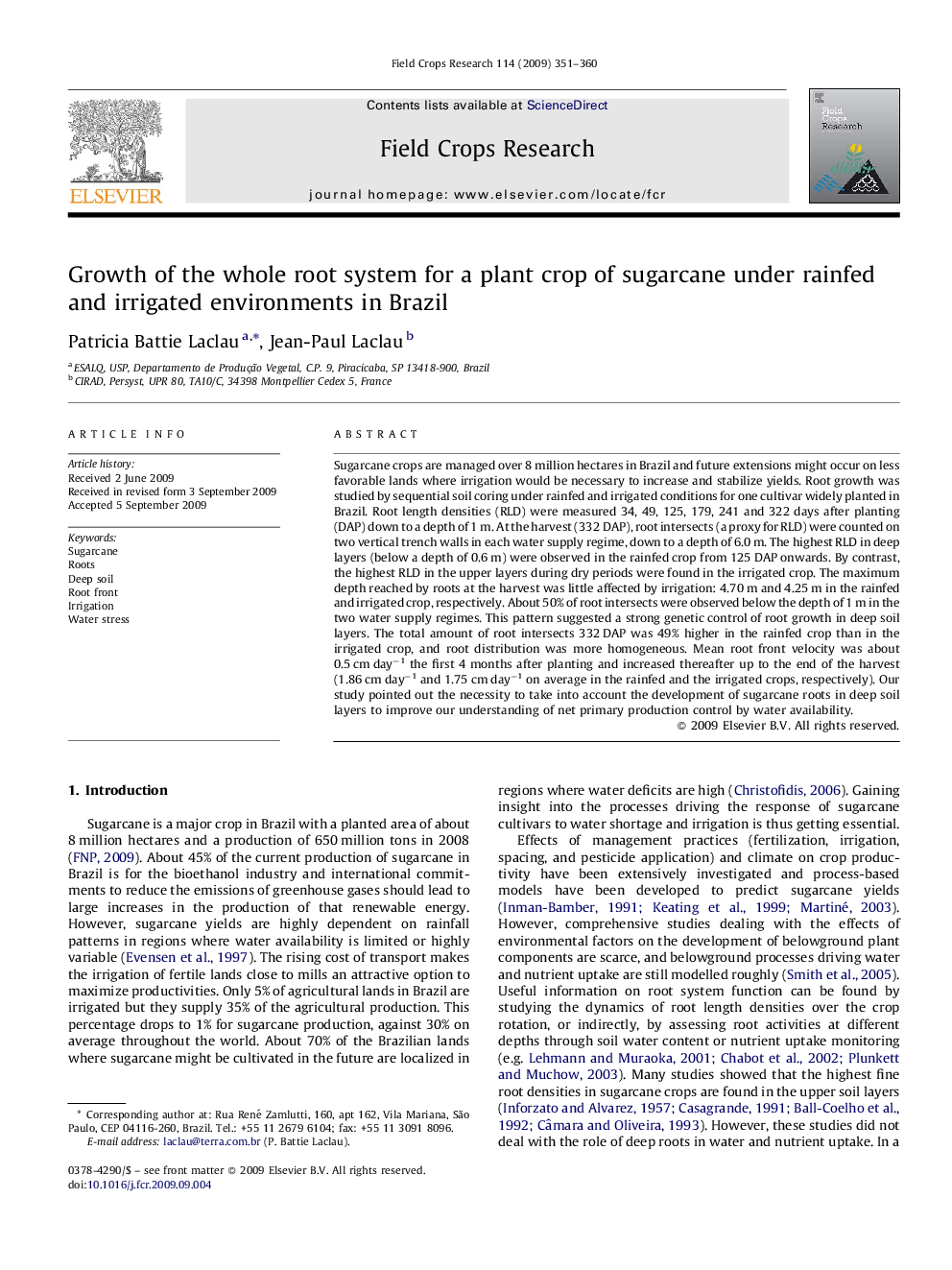| Article ID | Journal | Published Year | Pages | File Type |
|---|---|---|---|---|
| 4511036 | Field Crops Research | 2009 | 10 Pages |
Sugarcane crops are managed over 8 million hectares in Brazil and future extensions might occur on less favorable lands where irrigation would be necessary to increase and stabilize yields. Root growth was studied by sequential soil coring under rainfed and irrigated conditions for one cultivar widely planted in Brazil. Root length densities (RLD) were measured 34, 49, 125, 179, 241 and 322 days after planting (DAP) down to a depth of 1 m. At the harvest (332 DAP), root intersects (a proxy for RLD) were counted on two vertical trench walls in each water supply regime, down to a depth of 6.0 m. The highest RLD in deep layers (below a depth of 0.6 m) were observed in the rainfed crop from 125 DAP onwards. By contrast, the highest RLD in the upper layers during dry periods were found in the irrigated crop. The maximum depth reached by roots at the harvest was little affected by irrigation: 4.70 m and 4.25 m in the rainfed and irrigated crop, respectively. About 50% of root intersects were observed below the depth of 1 m in the two water supply regimes. This pattern suggested a strong genetic control of root growth in deep soil layers. The total amount of root intersects 332 DAP was 49% higher in the rainfed crop than in the irrigated crop, and root distribution was more homogeneous. Mean root front velocity was about 0.5 cm day−1 the first 4 months after planting and increased thereafter up to the end of the harvest (1.86 cm day−1 and 1.75 cm day−1 on average in the rainfed and the irrigated crops, respectively). Our study pointed out the necessity to take into account the development of sugarcane roots in deep soil layers to improve our understanding of net primary production control by water availability.
